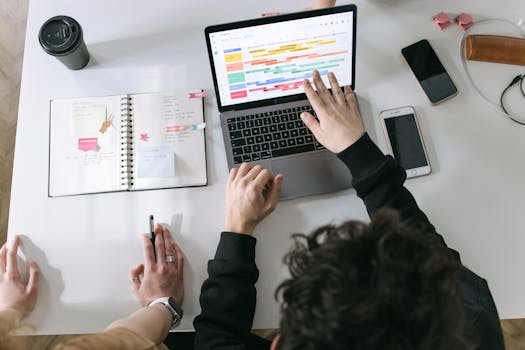Creating effective tech materials is crucial for conveying complex information clearly and engagingly. Whether for training sessions, product documentation, or user manuals, the goal remains the same: to simplify and enhance understanding.
Moreover, the relevance of well-designed tech materials cannot be overstated. As technology evolves, professionals must communicate effectively to ensure users comprehend new systems, tools, or processes. This article will guide you through the essentials of crafting outstanding tech materials.
With the right approach, anyone can create effective tech materials. This article outlines practical strategies to ensure your content is informative, engaging, and easy to understand.
Understanding Your Audience
Identifying your target audience is the first step in creating effective tech materials. Understanding their needs, preferences, and skill levels directly influences your content’s clarity.
Conducting surveys or interviews can help uncover what your audience seeks from tech materials. By gathering this data, you can tailor your approach to suit their specific requirements.
Knowing whether your audience comprises beginners or advanced users is essential. Beginners may need more detailed explanations, while advanced users could benefit from concise content focusing on key points.
Additionally, consider the diverse backgrounds and experiences of your audience members. Cultural and educational differences can affect how they process and interpret information.
Once you have a firm grasp of your audience, it will guide your tone, language, and complexity throughout your tech materials. This foundational understanding is crucial for engaging your audience effectively.
Choosing the Right Format
The format of your tech materials can significantly impact how well your message is received. Selecting the appropriate format involves evaluating the content’s purpose and audience preferences.
Common formats for tech materials include manuals, online tutorials, infographics, and video presentations. Each of these formats offers distinct advantages based on particular learning styles.
For instance, visual learners may benefit from infographics, while hands-on learners might prefer interactive tutorials. Choose a format that aligns with how your audience engages best with information.
Moreover, multimedia presentations can enrich the learning experience. Combining text, images, and videos can cater to multiple learning preferences in one cohesive document.
The right format not only enhances comprehension but also retains the audience’s attention. Striking a balance between information and engagement is the key to successful tech materials.
Design and Layout Principles
The design and layout of your tech materials are equally important in ensuring clarity. A well-organized structure directs readers’ attention to critical information without overwhelming them.
Employ headings, subheadings, bullet points, and tables to break down complex information. This organizational strategy helps readers navigate your material more efficiently.
Consider using consistent fonts, colors, and spacing in your design. Consistency aids readability and makes your tech materials visually appealing, encouraging your audience to engage.
White space is also crucial for a clean design. Adequate spacing between elements allows readers to absorb information without feeling cluttered or distracted.
Lastly, accessibility must always be a priority. Ensure that design choices comply with accessibility standards so all users can easily interact with your materials.
Writing Clear and Concise Content
Clarity and conciseness are vital when drafting the content of your tech materials. Avoid jargon and technical terms that may confuse your audience without explanation.
Utilize straightforward language and break down complex ideas into manageable parts. Employ definitions or explanations for any necessary technical terms, ensuring comprehension.
Active voice often makes sentences clearer and more direct, enhancing reader understanding. Additionally, shorter sentences can reduce cognitive load, enabling easier processing of information.
Where applicable, use examples or analogies to illustrate complex concepts. These relatable elements can improve understanding and retention of the material.
Finally, revising and editing your content ensures clarity and correctness before publication. Peer reviews can offer invaluable feedback and provide insights you might have overlooked.
Incorporating Visual Aids
Visual aids enhance understanding and retention of information in tech materials. They provide graphical representations of complex ideas, making them more digestible for the audience.
Examples of visual aids include charts, graphs, images, and infographics. These tools can illustrate statistics, show relationships between concepts, or clarify processes.
When incorporating visual aids, ensure they are relevant to the content and easy to interpret. Labels and captions can provide essential context for your visuals, enhancing their effectiveness.
Consider the quality of visuals as well. High-resolution images and well-designed graphics significantly impact the professionalism of your materials.
Ultimately, integrating visual aids should complement the text, promoting a holistic understanding while ensuring that the audience remains engaged and informed.
Testing and Feedback
Testing your tech materials before finalizing them is essential. Gathering feedback from real users can highlight areas of improvement and reveal potential misunderstandings.
Conducting usability tests allows you to observe how your audience interacts with the materials. Observations can uncover unforeseen challenges, prompting necessary adjustments.
Soliciting feedback through surveys or interviews can provide insights into audience perceptions. Gathering diverse opinions ensures a well-rounded evaluation of your materials.
After making revisions based on feedback, consider re-testing your updated materials. This iterative process enhances the overall quality and effectiveness of your tech documents.
Ultimately, a commitment to continual improvement through testing and feedback leads to more reliable and user-friendly tech materials.
Conclusion
Creating effective tech materials is a blend of understanding your audience, choosing the right format, and focusing on clarity. Adopting design principles and utilizing visual aids significantly enhances comprehension.
Remember to gather feedback and revise your materials based on real-world use, ensuring continuous improvement. With these strategies, you can produce impactful tech materials that resonate with your audience.
By prioritizing clarity, engagement, and user-friendliness, you contribute to an informed user base, making the journey through technology much more accessible.
| Aspect | Description |
|---|---|
| Audience Analysis | Understanding audience needs and preferences |
| Format Selection | Choosing between manuals, videos, infographics, etc. |
| Design Principles | Aiming for organized, accessible, and visually appealing layouts |
| Content Clarity | Writing clearly and avoiding jargon for better comprehension |
| Visual Aids | Incorporating relevant images, charts, and infographics |
| Testing & Feedback | Gathering feedback and revising materials for improvement |
- Identify your audience thoroughly.
- Choose appropriate formats for your content.
- Design with clarity and consistency in mind.
- Keep your writing concise and user-friendly.
- Incorporate relevant visual aids to enhance understanding.
- Test and refine your materials based on user feedback.


